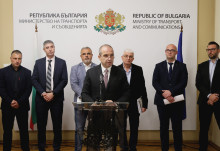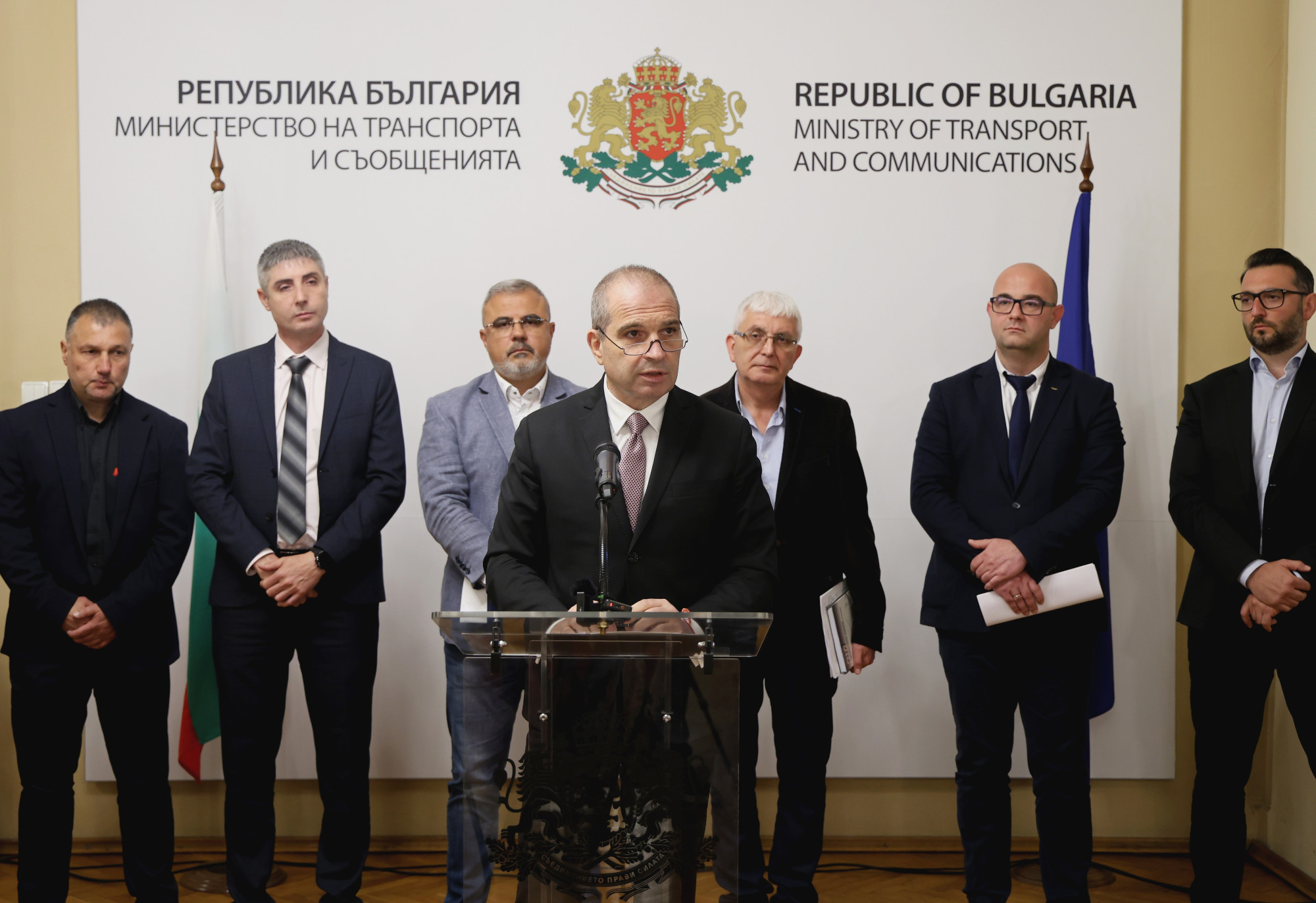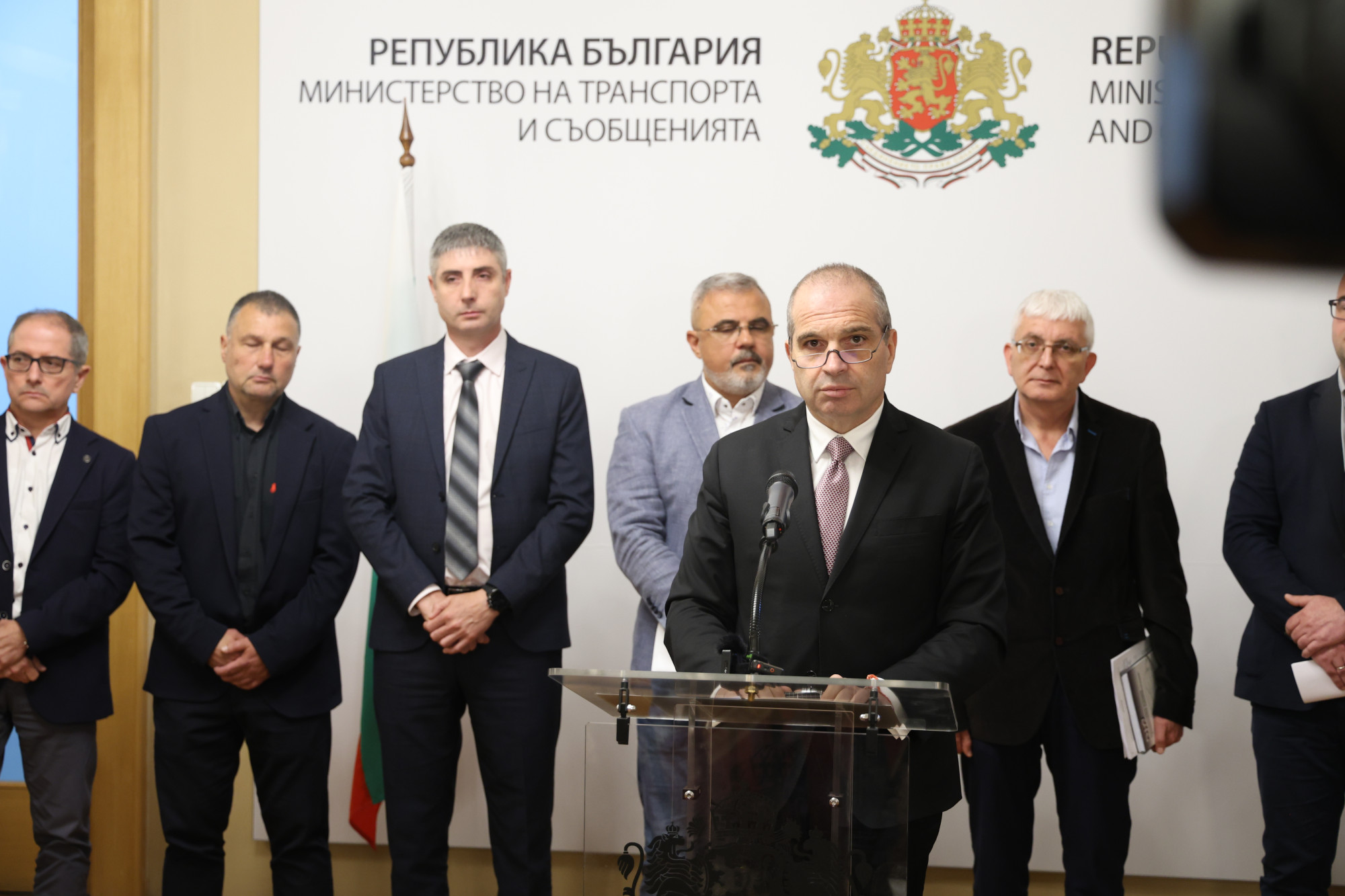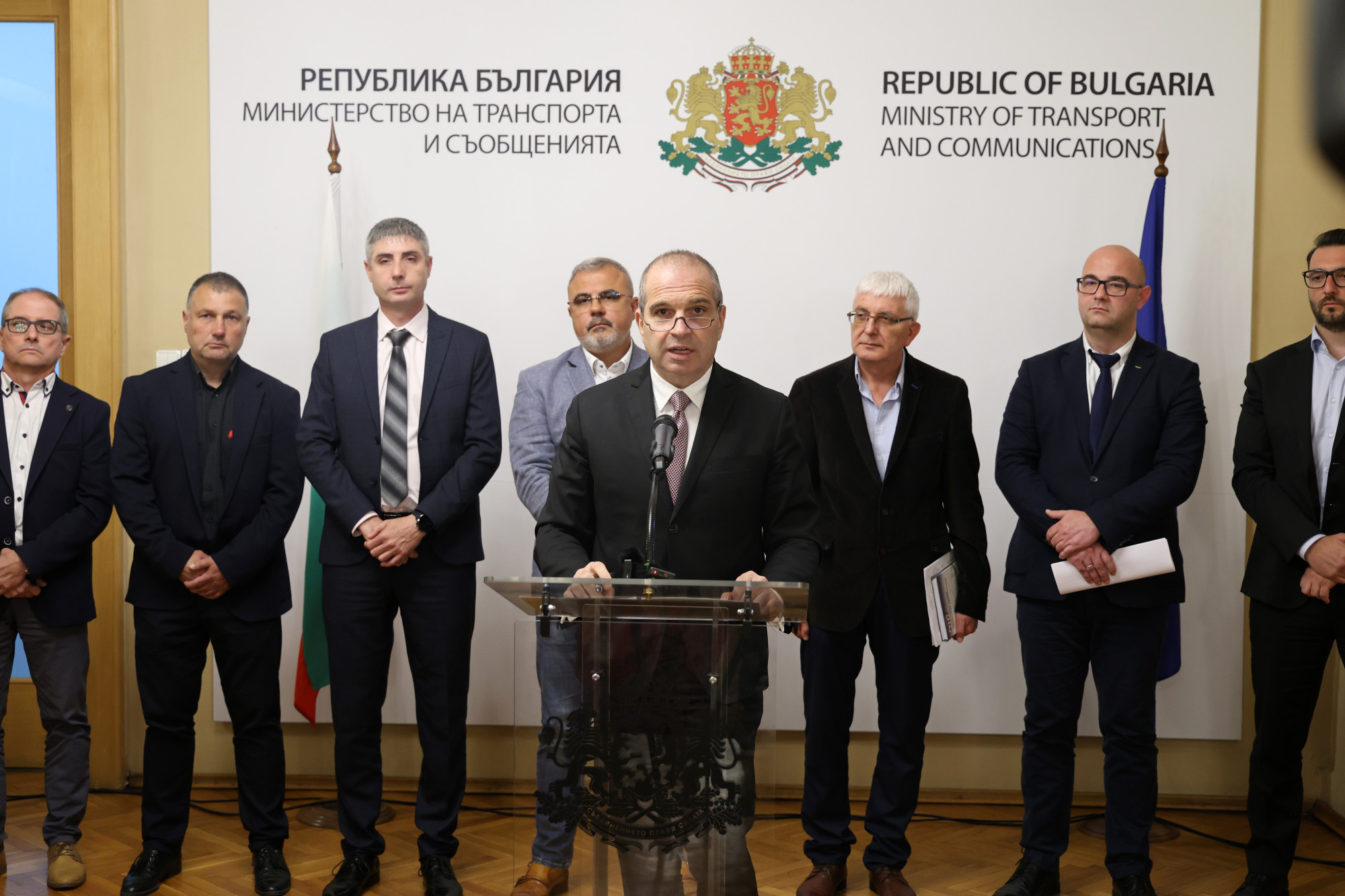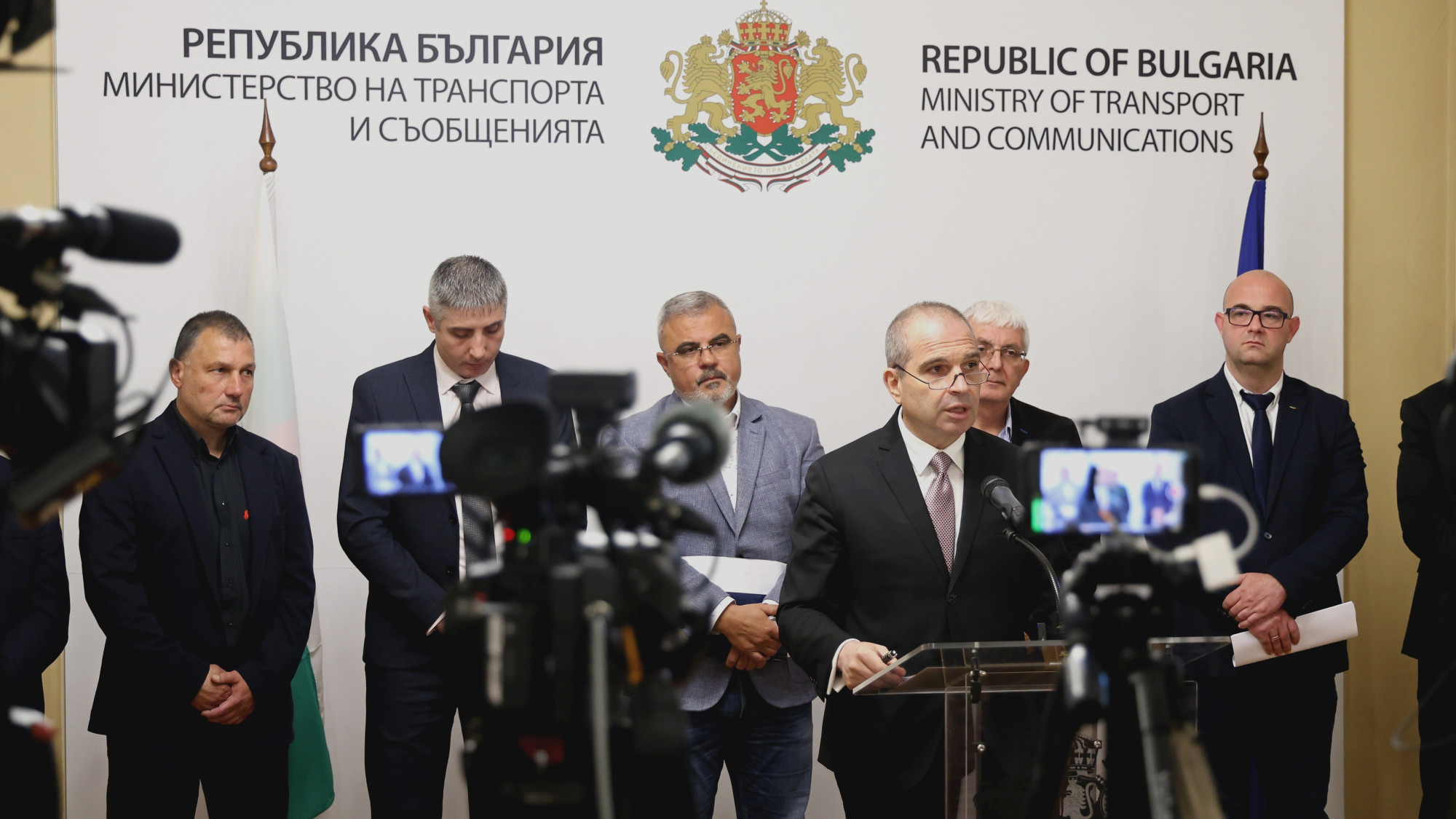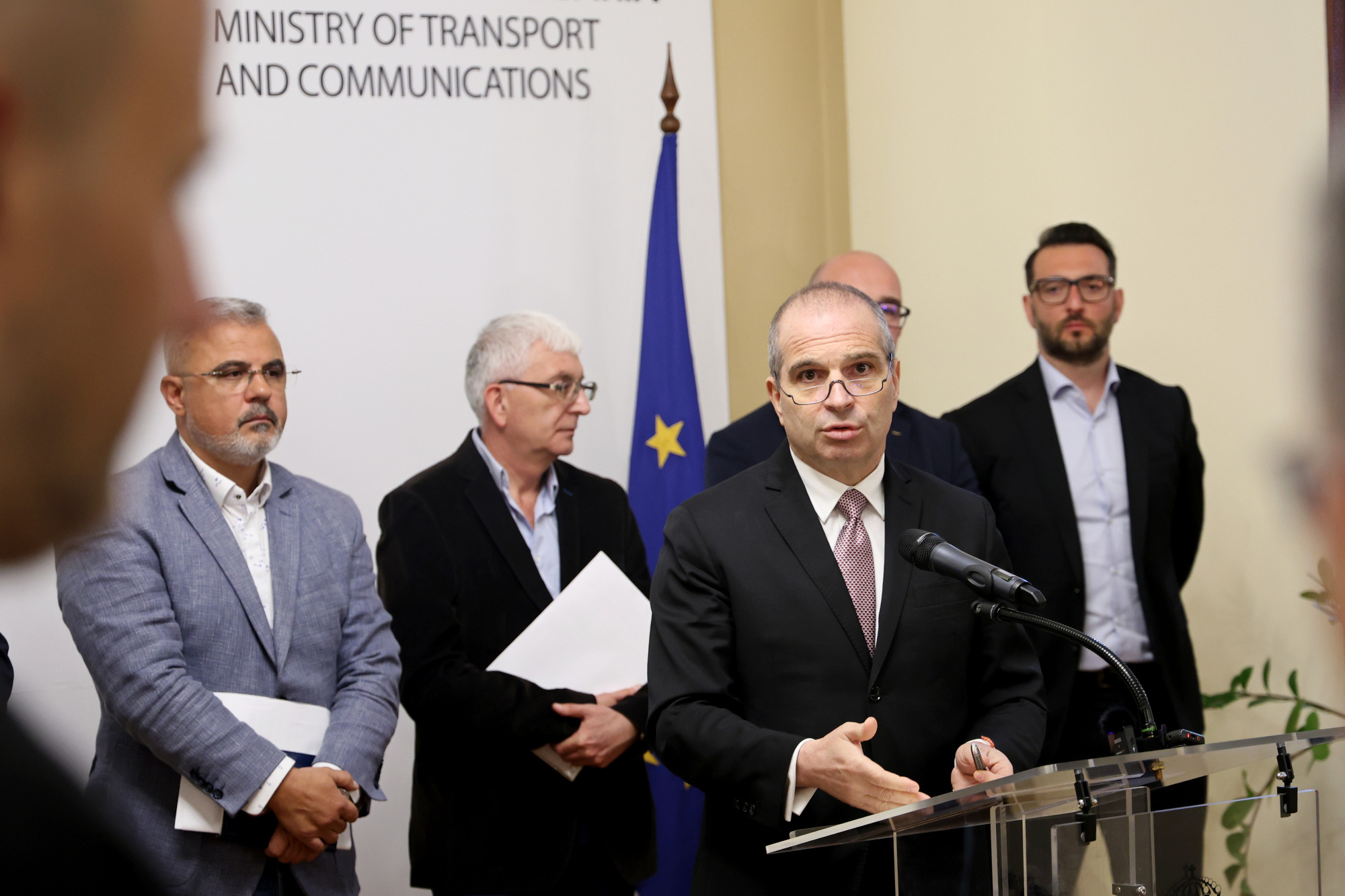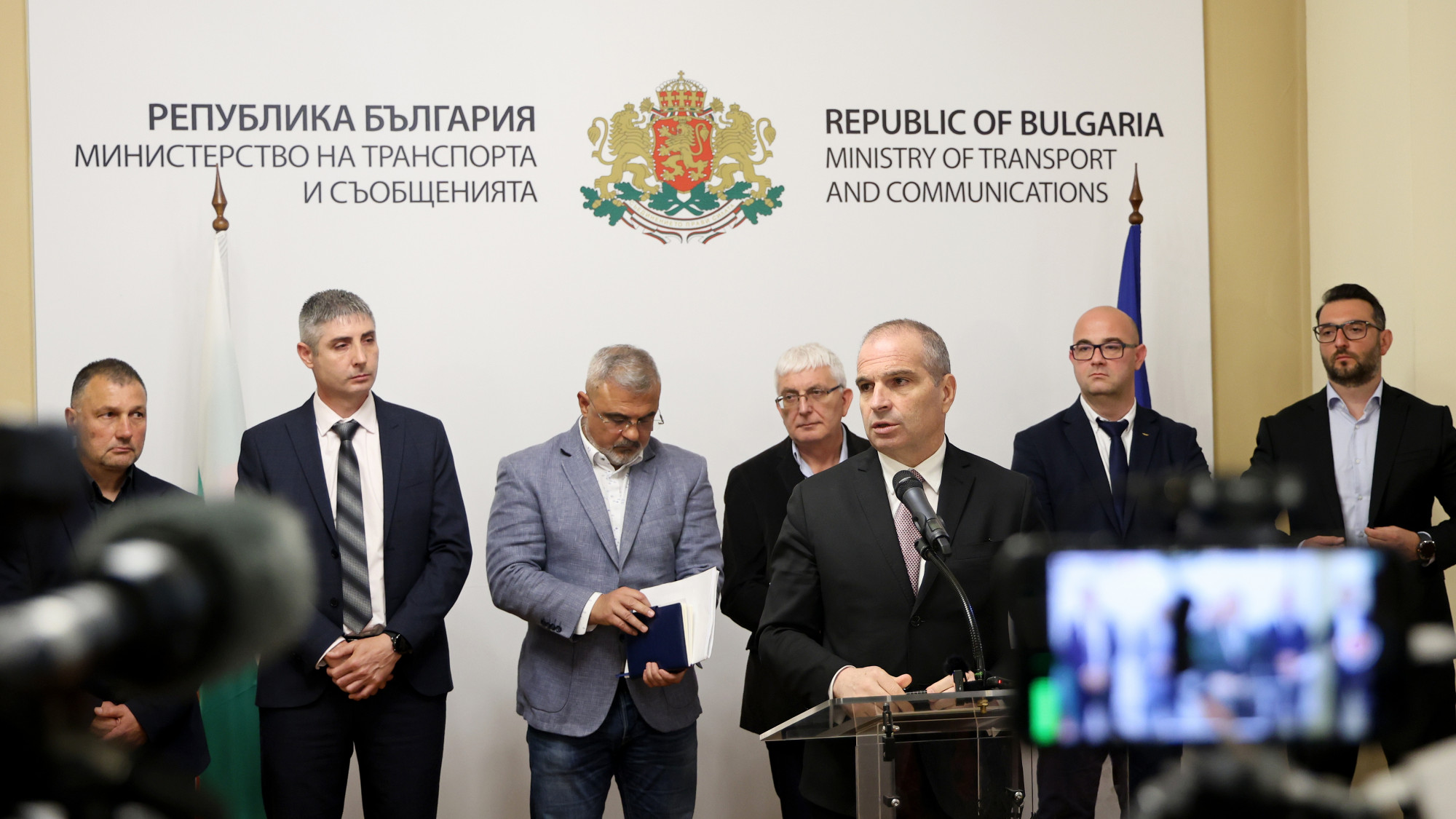As you are all aware, my term as Minister of Transport began the day after yet another serious railway incident, in which, tragically, two people lost their lives and six others were injured.
At that time, I declared that safety would be a top priority. I am aware that many people perceived this as just another slogan. However, those who know me understand that I don't operate with slogans – I work with plans backed by concrete actions: emergency (1 month), short-term (6 months), medium-term (2 years), and long-term, measures, each with clear deadlines and designated responsible parties.
Today, we are reporting on the emergency (1-month) measures, which have been completed, as well as part of the short-term (6-month) measures, which are already underway.
The overall conclusion is clear – there is light at the end of the railway tunnel.
The emergency measures have been implemented in full—100% completion. And the medium-term measures are progressing even ahead of schedule..
We are also seeing the first positive results:
The total number of railway incidents (both major and minor) for the period January – April 2025 has decreased by nearly 40% compared to the previous four months—from 129 to 74 cases. Among them, the ratio of collisions is 2:1.
The total number of all incidents (major and minor) has dropped by 23% - from 22 to 17 cases.
The total number of all near-miss incidents has declined by 29% - from 220 to 156 cases.
We hope this positive trend continues, as the safety measures will not only remain in force but will also be expanded further.
What have we achieved so far? I will divide the measures into several groups:
1. The first concerns the discipline of railway employees.
By my order, a strict implementation of all legal and regulatory requirements has begun at both the National Railway Infrastructure Company and Bulgarian State Railways. I am aware it may sound odd to issue an order to comply with the law, but clearly in Bulgaria we have reached such a point!
In my first days as Minister, I was shocked by some blatant breaches of basic safety rules, such as passing a red signal. It turned out that this was not an exception, but a widespread practice.
This was immediately and explicitly prohibited, except in exceptional circumstances and only with a signed Form 2A.
I will not hide that at the beginning some people treated my order as merely informative and continued with their old practices. That is why there have been disciplinary actions. Since 25.01.2025, when the order was issued, there have been 4 incidents of passing a red signal – 1 in January, 2 in February and 1 in March. The offenders have faced disciplinary measures – including demotion and even dismissal. Since 17.03.2025, there have been no further such violations!
At the National Railway Infrastructure Company – due to serious violations of the rules in February, two employees were dismissed; one more followed in March. With some others, we parted ways by mutual agreement.
Unfortunately, breaches of labour discipline and security measures continue to occur, although they are increasingly minor. Therefore, disciplinary measures will continue, in proportion to the severity of the offence. In light of the encouraging statistics, these will now be imposed under the Labour Code rather than the “zero tolerance” rule I introduced in January.
A publicly accessible database of safety indicators and a penalty system for offenders has already been created and will be available on the Executive Agency “Railway Administration” website next month. This will make it clear to everyone whether the violations are isolated or part of a recurring pattern. I will continue to show zero tolerance to repeat offenders.
However, we will not stop here – we are planning to purchase interlock devices with facial recognition or breathalysers for alcohol use in locomotives and trainsets – these machines will not start if the driver has consumed alcohol.
Breathalyser-equipped entry frames will be installed for dispatchers – the door will only open if the employee on duty has not consumed alcohol.
We are also introducing a schedule for drug testing, including random checks.
Measures have also been taken to eliminate the human factor in areas where train movements are manually regulated:
Automatic derailers will be installed at industrial branches to regulate the passage of trains. Such systems have already been installed on 15 out of a total of 22 industrial branches.In the remaining 7, there are issues with the electronics, so a stricter procedure has been introduced for trains transitioning from the branch line to the main line.
In sections under repair and at so-called "uncontrolled stations", temporary control panels will be installed and relocated as needed.
With all of this, we hope to minimise the human factor that could potentially lead to incidents. Nothing should endanger the life and health not only of passengers but also of BDZ and NRIC employees!
2. Comprehensive safety measures
I was shocked to learn that although the Railway Transport Act has been in force since 2002, no impact assessment of the law had been conducted—particularly regarding safety in railway transport. Clearly, no one had paid attention to this, despite a series of tragic incidents. Such an assessment has now been carried out.
As a result, amendments to the Ordinances are being prepared, which will update all safety measures accordingly.
We are exploring options to secure the necessary funding for the salaries required to appoint an additional 44 safety inspectors at the Executive Agency “Railway Administration”, including by reallocating internal reserves.
Emergency training has already been conducted for 100% of the safety personnel at both the Bulgarian State Railways and the National Railway Infrastructure Company.
3. Other safety measures
The installation of surveillance cameras at railway stations has begun. As of the end of April 2025, cameras have been installed at 52 stations and 11 railway stops – a total of 63 locations. Procurement procedures have been launched for the purchase of cameras for an additional 162 stations.
The installation of cameras in locomotives has also commenced. These will be dual-facing – recording both audio and video inside the cab as well as externally. Three locomotives have already been equipped, and a public tender has been announced for another 20. Over the coming years, funding will be secured to equip the remaining locomotives and trainsets as needed.
We are installing video surveillance at level crossings that are either unguarded or only equipped with light and sound signals. On this matter, I would like to make a direct appeal to the public: do not cross on red! Rushing for five minutes can cost you your life or health. The most recent incidents occurred precisely because people chose to cross the tracks at red lights or in unauthorised places.
I was greatly surprised to find out that there is actually no need to purchase a new GPS system for the planning, documentation, and monitoring of rail traffic. It turns out that such a system had already been developed but, for some unknown reason, has never been used. This system not only tracks the speed and position of trains but also monitors fuel levels, including how much is filled and consumed.. It can also serve as a preventive measure against fuel theft at the Bulgarian State Railways, which a significant ongoing issue.
The SUVR system is already being connected to the GPS system. The first section to be connected is Plovdiv–Burgas.
Within the SUVR system, data from the locomotive’s GPS is transmitted automatically, including information on both scheduled and estimated train movements. This enables the dispatcher to receive a complete, real-time overview of traffic within their area. The system will display the train number, locomotive number, the time of the last GPS data transmission, geographical coordinates, and speed. Based on this data, the location of the locomotive will be visualised on the train movement schedule.
Taking all this into account, I would like to express my gratitude to all Bulgarian State Railways and the National Railway Infrastructure Company employees who work every day to ensure that railway transport in our country is safe.
There are still many changes ahead to make rail transport not only safe but also fast and convenient, as it is in other European countries. This will require time and significant investment.
Back in January, I held discussions with the European Commission and requested support from international consultants to conduct a comprehensive review of the railway transport safety system.
We have reached an agreement with Jaspers, who will carry out an analysis of all individual components of the system and provide their recommendations for implementing safety procedures and making the necessary investments in safety.
We are working with experts from the European Investment Bank who specialise in rail transport,and the full expertise of the Bank will be mobilised for this task.

